By Nathania Stambouli
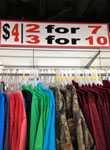 Liquidation products can be more challenging to merchandise than brand-new, factory packaged goods, but they can also be highly profitable. Great merchandising of liquidation products can make the difference between a successful discount store and one that struggles to turn a profit. Following are some key techniques to help liquidation retailers that Santa Fe Seconds, a California based trio of wildly successful discount stores, launched in 2000 and implemented in their retail operations.
Liquidation products can be more challenging to merchandise than brand-new, factory packaged goods, but they can also be highly profitable. Great merchandising of liquidation products can make the difference between a successful discount store and one that struggles to turn a profit. Following are some key techniques to help liquidation retailers that Santa Fe Seconds, a California based trio of wildly successful discount stores, launched in 2000 and implemented in their retail operations.
Display what you have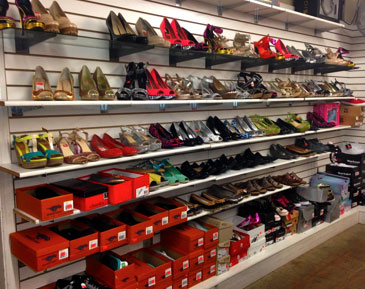
Liquidation discount stores do not require you to have a full size run of every style item. When you buy mixed lots, it is perfectly okay to display everything you have on a wall, and let customers look around and select what they want, with a “what you see is what we have” display.
Put seasonal items front & center
Holidays are always a time of increased shopping, and it is very important to always source a percentage of seasonal products and display them prominently. This immediately brings the buyer into the buying spirit, so they will spend not only on the seasonal items they have just seen, but also on all of your other attractive offers.
Never underestimate impulse items
Make sure you always have a selection of impulse items at your checkout counter to engage customers as they wait to pay for their purchases. Impulse items can consist of food or snacks, and small items like jewelry, cosmetics, batteries or other small, daily-use items. Add impulse items to your checkout locations and watch your average invoice amount increase instantly.
Store credit only
When dealing with liquidation items, if customers are not familiar with the fact that they may have damaged packaging or be otherwise imperfect, your requests for returns might be higher than usual. It is absolutely acceptable to offer store credit in place of refunds, keeping your customers happy without making a big dent in your bottom line.
Missing items? No problem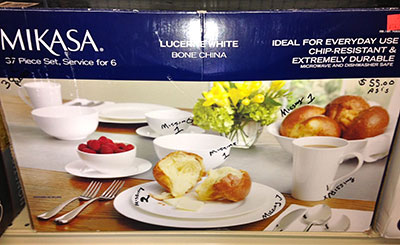
It is a common misconception that you can’t sell items in a retail store that are missing parts, or otherwise imperfect. Here is a clever method to inform customers of missing units: on an item’s packaging, make a note of how many units are missing from a set. It is then clear to the customer what he is going to get, instead of simply being told an item is “as-is” without knowing what might be wrong with it.
No box? No problem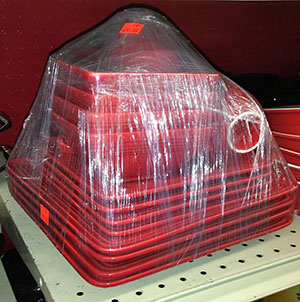
Liquidation products often come without an original retail box, or with a box that is in poor condition. If a dinnerware set is missing its original packaging, for example, shrink-wrap the items to keep them together and still sell them as a complete set. At the end of the day, your customer is not buying a retail box, but rather looking for a good deal.
Deals, deals, deals
Two-fer deals are always a great way to move more inventory while offering discounts to your customers. Santa Fe Seconds has clean, professional signage next to its merchandise, offering “2 for x” and “3 for x” deals. Do not be afraid to get creative.
Highlight clearance items
Most retail stores place their clearance section somewhere in the back of the store, so it does not detract from the rest of their more profitable inventory. Try the opposite route. Place your clearance items by the front door so that every customer who walks in or out has to look at it. This guarantees higher exposure for those items, and increases the likelihood that they will sell faster.
Fancy displays not required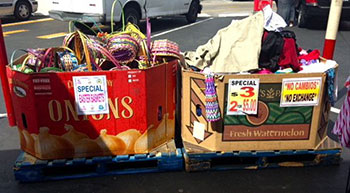
While there is great value in investing in professional store displays for certain types of items, other items can be displayed just the way you bought them. If you purchase wholesale merchandise from a liquidator that is delivered in large watermelon bins, those bins can make great rummage bins for cheaper items, impulse buys, or anything of lower value that customers might enjoy digging through.
Use shopping carts
If the square footage of your store permits, consider providing shopping carts. The more customers are physically able to carry, the higher the likelihood that they will buy multiple items. If shopping carts are not an option, shopping baskets can also be helpful. Equip yourself for the sales you would like to make.
Toot your horn
Invest in a big, clear sign to define the entrance of your store. Many discount stores make do with a vinyl banner that eventually succumbs to weather and ends up hanging by a thread. An attractive sign can bring in buyers who are just passing by (great return on investment), and creates brand recognition in your neighborhood.
Recycle displays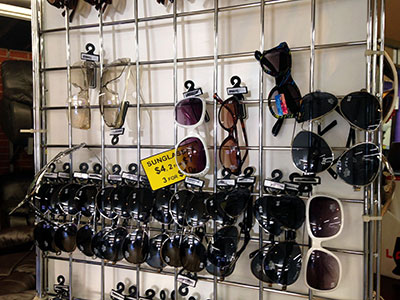
Just like you can use shipping bins to create a rummage sale in front of your store, you can also recycle other display units to highlight certain products. Santa Fe Seconds uses standard grid wall units to display sunglasses. They are cheap, effective and easy, and best of all, they are reusable for other merchandise down the line.
Communicate
Your store setup should ideally show your new arrivals and your highlighted items in its merchandising, but you may receive too many new items to highlight physically in the space. Peg boards or digital TV displays are great for communicating your latest arrivals, the original retail price of the item, and the great low price at which your customers can buy it. For more information about Santa Fe Seconds, visit santafeseconds.com.

 Nathania Stambouli is marketing manager for Via Trading Corp, a Los Angeles based wholesale liquidator. The firm specializes in supplying independent retailers of all types and sizes with cost-effective liquidated merchandise from the nation’s leading department stores and specialty retailers. In addition to providing a reliable stream of profitable inventory, Via Trading offers independent retailers a wide array of resources to assist in growing their businesses. For more information, visit
Nathania Stambouli is marketing manager for Via Trading Corp, a Los Angeles based wholesale liquidator. The firm specializes in supplying independent retailers of all types and sizes with cost-effective liquidated merchandise from the nation’s leading department stores and specialty retailers. In addition to providing a reliable stream of profitable inventory, Via Trading offers independent retailers a wide array of resources to assist in growing their businesses. For more information, visit